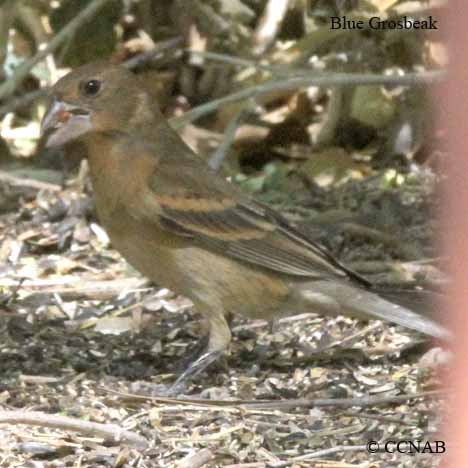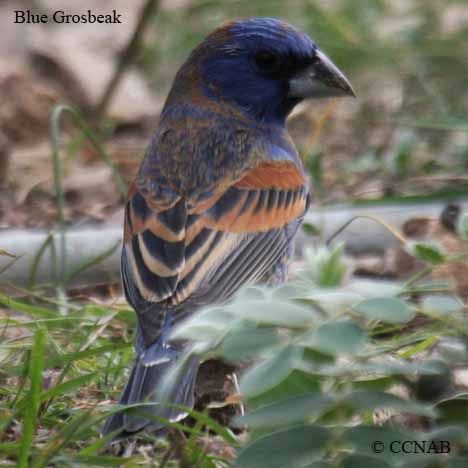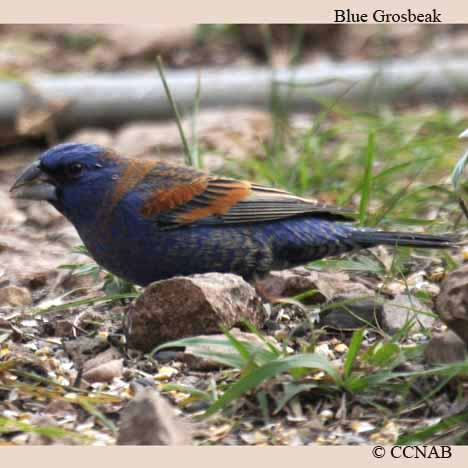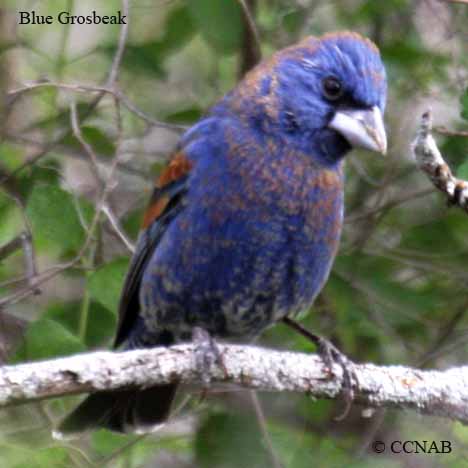Birds of Cuba, Vagrant Visitors, Introduced Birds and Possibilities
Blue Grosbeak
Guiraca bleu
Passerina caerulea
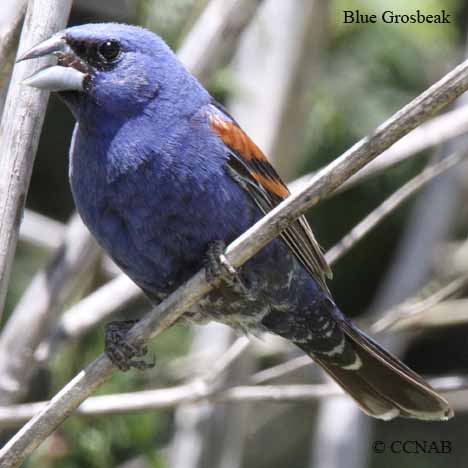
Life, Habitat & Pictures of the Blue Grosbeak
| B L | W W | W | Family | Latin Name |
|---|---|---|---|---|
| 6.75" 17.14cm | 11" 28cm | 1.0 oz 28.34g | Cardinalidae | Passerina caerulea |
Species: The Blue Grosbeak (Passerina caerulea) has similar colours to the Indigo Bunting and is a bigger bird in appearance, with a larger body and bill. The blue plumage may appear black in direct sunlight. This grosbeak can be seen in thickets along roads, feeding on plants in fields and it is a seed eater.
Distinctions: Sexually dimorphic, the male has a mostly dark blue body, black areas around bill, eyes and lores, rusty epaulettes and wingbars and a large bill. It has a blue back with dark streaking. Female is light brown, brown back with light streaking, light brown wingbars. The juvenile is similar to female, some blue colouring is seen in wings and undertail.
Voice: Call notes can be soft warbling in nature or metallic. It usually remains unseen in thickets but will perch up on an open branch when singing.
Nesting: Four to five pale blue eggs. Nest is constructed of clumps of plants on the ground, using grass, weeds and other small pliable materials.
- Breeding
- Year Around
- Winter
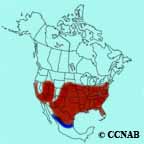
The Blue Grosbeak is found in fields and weedy areas and it prefers to be close to water. This grosbeak can also reside in thickets and riparian landscapes. It is seen along the eastern coast, north to New York, it has been reported even farther north from time to time. Going west, it can be found as far as California, back through Texas, to the southern tip of Florida. This grosbeak has been reported seen in Cuba.
